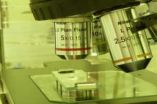(Press-News.org) Bisphenol A or BPA is a synthetic chemical widely used in the making of plastic products ranging from bottles and food can linings to toys and water supply lines. When these plastics degrade, BPA is released into the environment and routinely ingested.
New research, however, from the University of California, San Diego School of Medicine suggests it is the metabolic changes that take place once BPA is broken down inside the body that pose the greater health threat.
More than 90 percent of all Americans are believed to carry varying levels of BPA exposure.
In recent years, numerous studies have reported alarming associations between BPA exposure and myriad adverse health and development effects, from cancer and neurological disorders to physiological defects and, perhaps, a cause of childhood obesity.
Of particular concern is that BPA exposure is correlated with disruption of estrogen signaling. The chemical's molecular structure is similar to that of estradiol, one of the human body's three main estrogens, suggesting that BPA binds to estrogen receptors. The estrogen receptor is designed to grab and hold estradiol and related estrogens. Disparate chemicals, however, can share some structures found in estrogens, enabling them to bind to the estrogen receptor. When that happens, problems can occur.
In binding to the estrogen receptor, BPA can disrupt the body's endocrine or hormone system, with consequences especially worrisome for fetuses, infants and young children. Earlier this year, the U.S. Food and Drug Administration banned BPA in baby bottles and sippy cups. Its use is more broadly banned elsewhere in the world.
In new research published in the October 4 online issue of the journal PLOS ONE, two scientists at UC San Diego School of Medicine say three-dimensional modeling suggests a metabolite of BPA – a molecule produced when BPA is metabolized or broken down by the body – actually binds to the estrogen receptor much more strongly than BPA itself. The finding could point the way to development of a new class of drugs designed to specifically inhibit excessive estrogen activity linked to disease.
According to Michael E. Baker, PhD, UCSD professor of medicine, and Charlie Chandsawangbhuwana, a graduate student in the UCSD Department of Bioengineering, several research labs have reported that BPA binds weakly to the estrogen receptor, suggesting that something else is interacting with this receptor.
In 2004, Shin'ichi Yoshihara, PhD, and colleagues at Hiroshima International University, discovered that another compound, dubbed MBP, was produced when BPA was metabolized. MBP has a 100-fold to 1,000-fold stronger bond to the estrogen receptor than BPA. However, the structural basis for MBP's high affinity for the estrogen receptor was not investigated further.
In their PLOS ONE study, Baker and Chandsawangbhuwana revived Yoshihara's research by creating three-dimensional, molecular models of MBP and BPA in the estrogen receptor and matching it against the crystal structure of estradiol in the estrogen receptor. They found that MBP's longer structure allows both ends of the chemical to interact with the estrogen receptor in a way similar to estradiol. The shorter BPA molecule contacts the receptor at just one end, resulting in a weaker connection, providing an explanation for BPA's lower affinity for the estrogen receptor.
"In other words, MPB is basically grabbing onto the estrogen receptor with two hands compared to just one hand for BPA," said Baker. "Two contact points makes a much stronger connection."
Baker said the 3D modeling supports the idea "that BPA is not the endocrine disruptor culprit. Instead, MBP is one (of perhaps several BPA metabolites) that causes disruption of estrogen signaling in humans and other animals."
He said the research points to the need to measure MBP levels in urine and blood of patients suspected of BPA-mediated health effects, and may fuel development of a new therapeutic treatment for conditions linked to excessive estrogen levels and activity, such as some forms of breast and prostate cancers.
"One could use MBP, which has a novel structure, as a template to develop a new class of chemicals that could bind to the estrogen receptor with high affinity," Baker said. "The goal would be to have these chemicals inhibit the action of estradiol instead of activating the estrogen response. These chemicals could control unwanted growth of estrogen-dependent tumors."
INFORMATION:
BPA's real threat may be after it has metabolized
Chemical found in many plastics linked to multiple health threats
2012-10-05
ELSE PRESS RELEASES FROM THIS DATE:
Insects shape the genetic landscape through plant defenses
2012-10-05
As restaurant patrons' diverse food preferences give rise to varied menu offerings, so plant-eating insects' preferences play an important role in maintaining and shaping the genetic variation of their host plants in a geographic area, reports an international team of researchers that includes a plant scientist at the University of California, Davis.
The new study, involving aphids and the broccoli-like research plant Arabidopsis thaliana, provides the first measureable evidence that this selective process is driven, in part, by the pressure that multiple natural enemies ...
14 new biomarkers identified for type 2 diabetes
2012-10-05
Potsdam-Rehbruecke/Berlin – A research team led by Anna Floegel of the German Institute of Human Nutrition (DIfE) and Tobias Pischon of the Max Delbrueck Center for Molecular Medicine (MDC) has identified 14 novel biomarkers for type 2 diabetes. They can serve as basis for developing new methods of treatment and prevention of this metabolic disease. The biomarkers can also be used to determine diabetes risk at a very early point in time. At the same time the markers enable insight into the complex mechanisms of this disease, which still have not been completely elucidated. ...
Asteroid fragments could hint at the origin of the solar system
2012-10-05
The tiny pieces of rock – at 50-100 micrometers smaller than a human hair – have been captured from asteroid Itokawa by the Japanese mission Hayabusa. They were carefully unpacked by experts at the University's School of Earth, Atmospheric and Environmental Sciences.
It is the first time samples from an asteroid have been returned to Earth. Only about 70 samples have been released for international analysis – seven of these are being studied at the University.
The Hayabusa mission is part of a continuing effort to understand how asteroids, which are leftovers from ...
Everyday evolution
2012-10-05
Take a good look around on your next nature hike. Not only are you experiencing the wonders of the outdoors – you're probably also witnessing evolution in action.
New research from the University of Toronto Mississauga (UTM) on the effect of insects on plant populations has shown that evolution can happen more quickly than was previously assumed, even over a single generation. The study is to be published in the Oct. 5 issue of Science.
"Scientists have long hypothesized that the interaction between plants and insects has led to much of the diversity we see among plants, ...
Abortion rates plummet with free birth control
2012-10-05
Providing birth control to women at no cost substantially reduced unplanned pregnancies and cut abortion rates by 62 percent to 78 percent over the national rate, a new study shows.
The research, by investigators at Washington University School of Medicine in St. Louis, appears online Oct. 4 in Obstetrics & Gynecology.
Among a range of birth control methods offered in the study, most women chose long-acting methods like intrauterine devices (IUDs) or implants, which have lower failure rates than commonly used birth control pills. In the United States, IUDs and implants ...
How ketamine defeats chronic depression
2012-10-05
Many chronically depressed and treatment-resistant patients experience immediate relief from symptoms after taking small amounts of the drug ketamine. For a decade, scientists have been trying to explain the observation first made at Yale University.
Today, current evidence suggests that the pediatric anesthetic helps regenerate synaptic connections between brain cells damaged by stress and depression, according to a review of scientific research written by Yale School of Medicine researchers and published in the Oct. 5 issue of the journal Science.
Ketamine works on ...
UCLA astronomers discover star racing around black hole at center of our galaxy
2012-10-05
UCLA astronomers report the discovery of a remarkable star that orbits the enormous black hole at the center of our Milky Way galaxy in a blistering 11-and-a-half years — the shortest known orbit of any star near this black hole.
The star, known as S0-102, may help astronomers discover whether Albert Einstein was right in his fundamental prediction of how black holes warp space and time, said research co-author Andrea Ghez, leader of the discovery team and a UCLA professor of physics and astronomy who holds the Lauren B. Leichtman and Arthur E. Levine Chair in Astrophysics. ...
Climate sceptics more prominent in UK and US media
2012-10-05
Climate sceptics are being given a more prominent, and sometimes uncontested, voice in UK and US newspapers in contrast to other countries around the world, new research suggests.
The findings have been published today, 5 October, in IOP Publishing's journal Environmental Research Letters, as part of a study looking at how climate scepticism manifested itself in the print media of the US, UK, Brazil, China, India and France during a 3-month period which included 'Climategate' in 2009/10 and a second period which covered the IPCC's Fourth Assessment Report in 2007.
In ...
Maths sheds light on what delays in getting pregnant means for prospects of having a baby
2012-10-05
A new mathematical method can help to predict a couple's chances of becoming pregnant, according to how long they have been trying.
The model may also shed light on how long they should wait before seeking medical help.
For example, the researchers have found that, if the woman is aged 35, after just six months of trying, her chance of getting pregnant in the next cycle is then less than 10 per cent.
The analysis, developed at Warwick Medical School at the University of Warwick and the London School of Economics, uses the number of menstrual cycles over which the ...
Plants adapt their defenses to the local pest community
2012-10-05
Herbivorous insects, such as aphids, damage plants and can substantially reduce yields in agricultural settings; however, they can play a major role in maintaining genetic diversity. Ecologists Tobias Züst and Lindsay Turnbull from the University of Zurich together with colleagues from California and Great Britain demonstrated the importance of variation in herbivore communities using the model plant, Arabidopsis thaliana, also known as wall cress. According to Züst, the work is one of the first experimental confirmations of a forty-year-old theory that herbivorous insects ...
LAST 30 PRESS RELEASES:
Making lighter work of calculating fluid and heat flow
Normalizing blood sugar can halve heart attack risk
Lowering blood sugar cuts heart attack risk in people with prediabetes
Study links genetic variants to risk of blinding eye disease in premature infants
Non-opioid ‘pain sponge’ therapy halts cartilage degeneration and relieves chronic pain
AI can pick up cultural values by mimicking how kids learn
China’s ecological redlines offer fast track to 30 x 30 global conservation goal
Invisible indoor threats: emerging household contaminants and their growing risks to human health
Adding antibody treatment to chemo boosts outcomes for children with rare cancer
Germline pathogenic variants among women without a history of breast cancer
Tanning beds triple melanoma risk, potentially causing broad DNA damage
Unique bond identified as key to viral infection speed
Indoor tanning makes youthful skin much older on a genetic level
Mouse model sheds new light on the causes and potential solutions to human GI problems linked to muscular dystrophy
The Journal of Nuclear Medicine ahead-of-print tip sheet: December 12, 2025
Smarter tools for peering into the microscopic world
Applications open for funding to conduct research in the Kinsey Institute archives
Global measure underestimates the severity of food insecurity
Child survivors of critical illness are missing out on timely follow up care
Risk-based vs annual breast cancer screening / the WISDOM randomized clinical trial
University of Toronto launches Electric Vehicle Innovation Ontario to accelerate advanced EV technologies and build Canada’s innovation advantage
Early relapse predicts poor outcomes in aggressive blood cancer
American College of Lifestyle Medicine applauds two CMS models aligned with lifestyle medicine practice and reimbursement
Clinical trial finds cannabis use not a barrier to quitting nicotine vaping
Supplemental nutrition assistance program policies and food insecurity
Switching immune cells to “night mode” could limit damage after a heart attack, study suggests
URI-based Global RIghts Project report spotlights continued troubling trends in worldwide inhumane treatment
Neutrophils are less aggressive at night, explaining why nighttime heart attacks cause less damage than daytime events
Menopausal hormone therapy may not pose breast cancer risk for women with BRCA mutations
Mobile health tool may improve quality of life for adolescent and young adult breast cancer survivors
[Press-News.org] BPA's real threat may be after it has metabolizedChemical found in many plastics linked to multiple health threats





